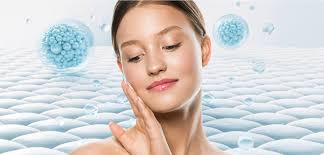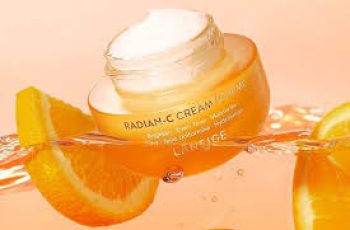
Extracellular Vesicles in Skin Care: The Future of Skin Rejuvenation?
If you follow the latest in skincare science, you might have heard the buzz about extracellular vesicles, or EVs.
These tiny cell messengers are stirring excitement in the beauty world for their skin-renewing potential.
But what exactly are extracellular vesicles? Are they safe? And why are they becoming a popular ingredient in skincare products?
This article will break down the science behind EVs and what it means for your skin.
What Are Extracellular Vesicles?
Extracellular vesicles are microscopic sacs enclosed by a lipid bilayer — think of them as tiny bubbles that cells release into their environment.
These vesicles act as couriers, carrying important messages from one cell to another.
They are secreted by various cells in the body, including those found in the skin. EVs can travel between layers of the skin — moving from the dermis (deep skin) to the epidermis (surface layer).
This movement allows EVs to facilitate communication between different skin cells such as keratinocytes, melanocytes, and fibroblasts.
These cells are vital for skin structure, pigmentation, and collagen production.
What Do Extracellular Vesicles Carry?
What makes EVs so fascinating is their cargo. These vesicles transport a range of bioactive molecules that influence how cells behave. Here are some examples of what EVs carry:
Matrix metalloproteinases (MMPs): Enzymes that break down collagen and other proteins in the skin matrix.
Inflammatory cytokines: Molecules involved in immune responses and inflammation.
Growth factors: Proteins that promote cell growth and repair.
Messenger RNA (mRNA) and microRNA (miRNA): RNA molecules that regulate gene expression in recipient cells.
Mitochondrial DNA and genomic DNA: Genetic material that can impact cellular function.
By transporting these molecules, EVs influence processes like skin repair, inflammation, aging, and pigmentation.
How Do Extracellular Vesicles Work in Skin Communication?
Think of EVs as advanced communication tools that cells use to talk to one another.
Unlike traditional signaling molecules, EVs protect their cargo inside a lipid shell, ensuring safe delivery over longer distances.
For example, EVs can carry microRNAs that modulate gene activity in recipient cells, effectively altering how those cells function.
They can also deliver growth factors to stimulate collagen production or reduce inflammation.
This intricate signaling helps coordinate skin health by regulating cell renewal, immune responses, and tissue repair.
Types of Extracellular Vesicles: What Are Exosomes?
Extracellular vesicles come in several varieties, categorized mainly by their size and origin. One well-studied subtype is exosomes, the smallest EVs typically ranging from 30 to 150 nanometers in diameter.
Exosomes have gained popularity because they are easier to isolate and study, making them prime candidates for use in skincare and medical research.
In skin care, exosomes often serve as delivery vehicles for regenerative molecules like growth factors and RNA, helping to promote healthier, younger-looking skin.
What’s Inside Extracellular Vesicles in Skin Care Products?
In skincare formulations, EVs — especially exosomes — are loaded with bioactive molecules such as:
Growth factors that stimulate collagen and elastin synthesis.
Anti-inflammatory agents that soothe irritated skin.
RNA molecules that regulate genes involved in skin repair.
These ingredients can potentially rejuvenate skin by promoting cell regeneration, reducing inflammation, and improving overall skin texture and tone.
Are Extracellular Vesicles Safe in Skincare?
Because EVs are a relatively new addition to cosmetic products, comprehensive safety studies are still underway. However, safety largely depends on the source of the EVs and their contents.
Not all EVs are beneficial. Some can carry harmful signals, especially if derived from damaged or senescent cells — cells that have stopped dividing and contribute to skin aging.
For example, EVs secreted by senescent cells may carry enzymes like matrix metalloproteinases (MMPs) that break down collagen and accelerate skin aging.
That’s why the origin of EVs in skincare products is crucial — regenerative sources like platelets are preferred for their healing and renewing properties.
Potential Risks of EVs in Skin Care
EVs from unhealthy or damaged cells can worsen skin issues. For instance, DNA damage triggers cells to release more EVs, some of which carry stress signals that promote aging or inflammation.
Senescent cells use EVs to “spread” aging signals to surrounding cells, leading to further tissue damage. This is a major concern when sourcing EVs for cosmetic use.
Thus, quality control and careful screening of EV sources are essential to avoid unwanted side effects and ensure only beneficial signals reach your skin.
Why Do We Need More Research on EVs?
While preliminary studies show exciting possibilities, extracellular vesicles in skincare are still an emerging field. Many claims need to be validated through rigorous clinical trials.
We don’t yet fully understand how EVs behave once applied topically or how long their effects last on human skin. More evidence is needed to confirm their safety, efficacy, and optimal usage.
As research progresses, we expect clearer guidelines and improved products that harness EVs for skin health with confidence.
How Can Extracellular Vesicles Benefit Your Skin?
EVs increase naturally with age, but their effects can be a double-edged sword. Some EVs from aging or senescent cells can accelerate skin deterioration, while others from regenerative sources promote healing.
To be beneficial, EVs must come from healthy, regenerative tissues. For example, platelet-derived EVs contain growth factors that encourage skin renewal and collagen production.
Products formulated with regenerative EVs may help reduce wrinkles, improve elasticity, and brighten dull skin by enhancing cell communication and repair.
Examples of EV-Based Skin Care Products
One well-known example is Plated Skin Science Intense Serum, which contains platelet-derived exosomes. This product claims to deliver regenerative EVs that support skin renewal and hydration.
As more companies explore this frontier, expect to see a growing number of serums, masks, and treatments featuring extracellular vesicles as key ingredients.
However, always research product sources and manufacturer transparency before purchasing to ensure you get high-quality EV formulations.
How to Choose the Best EV Skincare for You?
If you’re interested in trying EV-based skincare, consider the following tips:
Look for products with EVs sourced from regenerative tissues like platelets or stem cells.
Avoid products that don’t disclose the source or contents of their EVs.
Consult a dermatologist to understand whether EV skincare suits your skin type and concerns.
Remember that EVs work best as part of a comprehensive skincare routine, not as miracle cures.
Combining EVs with proven skincare ingredients like antioxidants and moisturizers can optimize your results.
Final Thoughts: The Future of Extracellular Vesicles in Skin Care
Extracellular vesicles represent an exciting frontier in skincare science, offering a novel way to support skin communication and regeneration.
While the technology is promising, we’re still early in understanding how best to harness EVs safely and effectively in topical products.
Keep an eye on new research as it unfolds, and stay informed about the sources and science behind the EV skincare products you choose.
If you want to rejuvenate your skin with cutting-edge science, EVs might soon become a powerful tool in your beauty arsenal.


